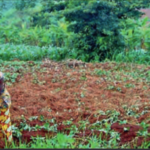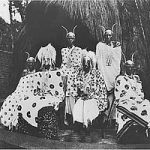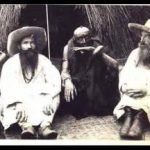Changing Elements On Oppression
The conclusions to be drawn from the changes in one region of Rwanda are relevant for other regions as well. We have analyzed how the growing power of the state undermined kin groups, transformed patron–client ties, and created new forms of ethnic, identities. These changes occurred in the context of, and interacted with, alterations in the social relations of production. Transformations in state power, clientship relations, and labor control mechanisms helped to create the social preconditions to revolution, by contributing ta a heightened political consciousness and solidarity among Hutu.
The growth of self-conscious identity among groups of Tuutsi had emerged in the central core of the state before the onset of European colonialism. The rich oral literature of the court and its highly developed ritual embodied in the Esoteric Codes served as effective catalysts in the ideologization of Tuutsi identity; these were perhaps more effective in some ways than writing because of the participatory aspects of oral recitations and ritual and because such oral presentations could adapt to changing circumstances and perceptions. During the colonial period, Tuutsi self-awireness was further enhanced and articulated in the writings of educated Tuutsi. Since writing was a skill limited to a relatively small number of Rwandans-many of them Tuutsi-the fact of literacy, as well as the content of the written work, became an important element (as both implement and symbol) of class differences and hence of Tuutsi elite identification.
Group awareness among Hutu came later. This was partly because Hutu relationships to the central structures of political power were both diffuse and distant: as Hutu were increasingly included in a common structural role within a single state apparatus, they also developed an “ethnic” identity, which was no less powerful than that of Tuutsi. This book has told the story of how that identity emerged.
A national political role for Hutu leaders was delayed, relative to that of Tuutsi, partly because of the structural obstacles to obtaining modern “leadership” skills in a restrictive colonial context. ‘There were always political leaders who were “Hutu,” but they were leaders of localized kinship, neighborhood, or regional groups, who may have coordinated local resistance to the changing impositions of Tuutsi control but did not appear to mobilize Hutu more generally. Many of the Hutu who became prominent during the colonial period were educated in mission schools. They played an important role in articulating Hutu demands in the 1950s, using the printed news media to propagate their cause. Leaders were also central in organizing coordinated manifestations of discontent. Such leaders were important throughout the period of the expansion and changing nature of Tuutsi power, but especially in the 1950s and early 196os.
Hutu political identity, articulated in the Hutu party politics of the 1950s, constituted a vehicle of revolutionary protest and ultimately led to the overthrow of Tuutsi hegemony. Yet Hutu leaders did not “create” Hutu ethnic consciousness. The grievances that formed the basis of this conseiousness and provided the motivating force of its political effectiveness were already there, products of the realities of everyday life for non-Tuutsi. In many ways, the grievances were felt more deeply by the pensants in the hills than by the Hutu elitein fact, for Rwanda it would be more accurate to argue that Tuutsi chiefs, through their use and abuse of power, created Hutu consciousness. It
is in this sense that the analysis concerns the “cohesion of oppression.” It was in fact oppression in its many different forms that brought about the cohesion among Hutu that contributed to the revolution and its outcome.
THE EMERGENCE OF POLITICAL PROTEST
The latenincteenth and early twentieth centuries saw the erosion of kin group status and solidarity in Kinyaga, while the extension of clientship ties brought together men of various kin groups in a common position of political subordination. These two developments, linked to the expansion of state power, served to broaden corporate identity beyond kin criteria to embrace ethnic criteria. Such changes reflected the increased power available to Tuutsi during the colonial period and the transformation of clientship linkages from ties of alliance to instruments of exploitation.
Also important in the emergence of protest were the presence of ideological alternatives to the central Rwandan system (both old-from memories of an earlier autonomyand new the result of European mission and educational influences or experiences with different conditions outside Rwanda, as in the Congo), and the possibility, for some people, of gaining economic autonomy from the system. The geographical location of Kinyaga played a role in this regard. During the earlier period, distance from the central court provided a certain amount of political autonomy to Kinyaga, so that the hierarchical patterns of stratification
and subordination as they emerged in central Rwanda came late to the region.
Later, during the colonial period, Kinyaga’s frontier position assumed significance with the development of the “Kivu complex.” Proximity to Kivu meant that colonial exactions in the form of high taxes, forced labor on public works, obligatory cultivation, and recruitment of workers for European enterprises were very severe. These conditions served to heighten antagonism against Tuutsi intermediaries. At the same time, changing relations of production provided some economic independence to wage workers and, thereby, escape from clientship. Proximity to Bukavu provided ideological alternatives and a certain amount of economic autonomy to a small Hutu “elite” who found clerical or skilled workers’ jobs in the town (and could thus free themselves from personal dependence on chiefs). These leaders used such resources as mimeograph machines and organizational skills (acquired outside the system) to articulate and channel the grievances of rural dwellers.
Thus, the mechanisms of protest were acquired at least in part through external contacts. Economic autonomy provided both independence vis-à-vis local authority and impetus for leaders to change their situation of blocked mobility. Moreover, through external contacts (including the church networks) the future leaders of protest gained skills essential for effective organization.
The establishment of an identity group determined by its members’ relations to an oppressive system, the perception of viable ideological alternatives to this system, and the acquisition of external material bases independent of the systern itself were key developments in the organization of effective protest in Kinyaga. This Kinyagan model cannot be extrapolated directly to other regions of the Rwandan state. It does appear, however, that similar elements were present even though different conditions weighted their importance differently.
The northern regions (Gisenyi, Ruhengeri) were similar to Kinyaga in that the introduction of central Tuutsi rule coincided roughly with the arrival of European colonial rule. Moreover, in these areas as in Kinyaga, a frontier location and memories of earlier times facilitated access to alternatives to the central Rwandan political norms. But in the north, Tuutsi-Hutu relations differed in certain respects from those in Kinyaga because the Tuutsi were proportionately fewer, and central power had been only very recently and imperfectly established. Even alter fifty years of contact with central institutions, political activity in the north during the terminal colonial period may be seen more as resistance than as revolution. Anti-Tuutsi sentiments in this region were fostered not only by the experience of a viable political alternative, but also (in Gisenyi) by the oppressive administrative measures taken to encourage labor migration to Zaïre (Rutshuru and Gishari which paralleled those in Kinyaga.
On the other hand, intra-Hutu cohesion on issues other than opposition to the Tuutsi has heen problematic in the northem regions. A tradition of very large sub-clans that have retained a considerable degree of corporate autonomy is one element that cuts through pan-Hutu cohesion. A second is the well-developed system of land clientship in the north involving Hutu landowners and other Hutu who are their land clients. The land clientship system constitutes a potential source of cleavage among northern Hutu, and in the early post-independence period, the issue of land reform in the north was a continuing source of tension between Hutu leaders from the north and those from the central regions of the country.
As in the north, ethnic differences were clearly drawn in central Rwanda, but Tuutsi domination was long-established and harsh. Here, as in Kinyaga, economic change (forced cultivation and akazi, as well as cash crop production) was important in the development of more exploitative relationships, and in creating a potential for resistance. But an important ingredient in the articulation of dissent seemed to be material and moral support from sources outside the Tuutsi system. In this regard, the Catholic Church played a key role through schools, publications, and employment, and also by providing an organizational network and skills. Political protest in the center was organized by a highly educated Hutu elite who were unable to attain a higher status.
Gisaka, located far from central Rwanda on the eastern frontier of the country (in southern Kibungo Prefecture) and characterized by a relatively large Tuutsi population, it would seem to constitute a case in some ways quite similar to that of Kinyaga. As in Kinyaga, the conquest of Gisaka by the Rwandan central court did not long predate the reign of Rwabugiri. In some respects, the area was not fully incorporated before Rwabugiri’s time. Major resistance occurred even in this century. Contact with Rwandan cultural norms, however, was of longer duration and generally greater in intensity than in Kinyaga. Tuutsi control was probably relatively well-deveIoped, and this may have impeded the expression of Hutu dissent. (More research at the local level is needed before any firm conclusions can be drawn.)
Opportunities to acquire an independent economic base and awareness of alternatives were not as easily accessible to residents of Gisaka as to Kinyagans. Protest in Kibungo, therefore, was perhaps manifested
less in Hutu political activity than by the relatively high rate of long-term labor emigration to Uganda or Tanzania. The frequency of voyages by Hutu in search of work and the length of time they spent abroad may have reduced the potential political impact of external contacts. Such a pattern of migration implies that the emigrants lost their local base in Rwanda; therefore, migration was apparently more important as a form of escape than as a means of introducing alternatives to the Gisaka social system.
More data are needed on the impact of colonial changes in Gisaka to explain why emergence of overt protest there was delayed. Gisaka’s relatively low population density with a relatively high proportion of Tuutsi and its more fully developed clientship institutions may have impeded effective organization. Moreover, in Gisaka the problem of “cohesion” among the Hutu was compounded by “escape” through long-term or frequent labor migration. In Kinyaga, the proximity of the Kivu complex meant that the ultimate escape was to be sought in overturning the system.
The empirical material presented in this study supports a number of historical propositions that are clearly incompatible with the functionalist model of Rwandan society and politics described in chapter 1. The propositions include the following:
1. Statebuilding does not always promote integration; it may generate profound social cleavages.
2.Dependency relationships (analyzed here as clientship ties) do not proliferate only in the absence of strong state structures, as studies of feudalism in Europe often suggest. Clientship may gain importance in the context of a strong, growing state.
3.Moreover, clientship relations do not necessarily promote vertical integration between social strata; patron–client ties which become highly exploitative may foster cohesion among subordinates.
4. Ethnicity in Africa is not primordial. It is a historical, socially constructed category that can experience significant change. Changes in ethnic identities and solidarities are related to other broader societal transformations.
5. In Rwanda, oppression created by clientship and policies of labor-control fostered the growth of political consciousness and pan-Hutu ethnic solidarity.
6. Social revolutions in Africa are not generated exclusively by outside forces undercutting traditional beliefs. Outside resources may be important, but so are internal structural transformations-the long-term processes which produce the preconditions for revolution.
There were elements of both class and ethnic conflict in the struggles of the 1950s. But the “ethnic” element was not just a primordial relic from the precolonial period; it was shaped and transformed as a result of colonial changes. Economic grievances were a critical factor in rural unrest, as was the struggle over access to the means of production (land and labor). But for the majority of the population, ethnic status and class overlapped-that is, most of the people who were poor and exploited were categorized as Hutu. Among Hutu, however (as among Tuutsi), there were differences. For example, some Hutu (such as school teachers, traders, artisans) were better off than others. Yet in the context of the Rwandan state, based on ethnic discrimination, all Hutu were viewed as, and to a certain extent were, “subordinate.”
Not all Tuutsi were rich, powerful, and wealthy. Data from Kinyaga indicate that many nonpolitical Tuutsi had their grievances against the system (probably many of these became adherents of RADER or local independent parties during the late 1950s). Then why did the conflict of the late 1950s take the form of a Tuutsi–Hutu confrontation? The salient fact was that virtually ad those who controlled the state – the chiefs and subchiefs – were Tuutsi, and here is where the ethnic factor becomes important. We have seen that even within Kinyaga the extent of Hutu–Tuutsi cleavage varied according to historical and colonially introduced factors. But ultimately, an appeal to Hutu solidarity became, for Hutu leaders, the most effective rallying point for revolutionary activity. Although Hutu could and apparently did distinguish among Tuutsi of different types and attitudes, the fact that chiefs and other African agents of the state were seen as exploiters, and that virtually ail of these were Tuutsi, made an appeal to ethnic solidarity potent where an appeal to “all poor people” may have been less so. Because colonial policies had repeatedly pressed upon Hutu their inferior, excluded status, even poor Tuutsi did not experience quite the same forms of discrimination as did those classified as Hutu.
This book has focused on Rwanda, but I would like to think that the approach used here is relevant for the study of politics elsewhere in Africa as well. Such an approach is particularly useful for understanding the evolving interactions between changing state structures and economic
inequality that occurred (in various forms) in colonial Africa and that are occurring today, in other forms, in post-colonial African states.
An important general point that is reafirmed when a historical approach is used concerns the meaning of “traditional” when applied to institutions, offices, or roles in Africa. We cannot assume, for example, that where chiefs retain titles that predate European colonialism, the powers and prerogatives of those chiefs (and the constraints on their power) have remained unchanged in the face of colonial political transformations and the growth of capitalist economic relationships. In other words, if we are to understand the impact of colonialism on class structures we need to look beyond surface manifestations of power to ways in which control over key resources (such as land, cattle, labor, education, jobs) may change, how those changes are related to state power, and how they may affect rural political consciousness.
The empirical emphasis of this approach also demonstrates, in contrast to some of the early dependency writing on Africa, that local leaders in a colonial or neocolonial situation are not just puppets of extemal forces (such as European colonial rulers, international capital, or, more recently, the World Bank and the International Monetary Fund). What local collaborators with external powers are able to do is substantially constrained and circümscribed by the reality of depen-dence. Yet such local leaders can and do shape these circurnstances in important ways, as we have seen in the case of Tuutsi authorities in Rwanda.
Similarly, if an emphasis on history and empirical analysis is combined with field work and collection of oral data, it will be possible to discover more about the ways that. non-elites have attempted to shape the conditions of their subordination. Research of this type has already begun to show that non-elites have not been just passive recipients of the policies of leaders in colonial or post-colonial African states. This is an important area of research and one that political scientists cannot afford to neglect if they are to understand the dynamics of contemporary state formation and decline in Africa.
Until recently, much of the work of political scientists studying the third world has privileged the study of elites. In the 1960s this orientation took the form of viewing government leaders as benevolent “modernizers.” Growing state power (“government penetration”) was seen as positive because it reflected an increasing capacity on the part of leaders to get people to do what they wanted thern to do. That approach has since been questioned; it is now recognized more generally that we need to look behind the rhetoric of leaders to how they are using power, to what ends, and to whose benefit. An approach such as the one used in this study, combining theoretical inquiry with historical, empirical research and a local-level perspective, helps to illuminate such interactions between state and people.
https://uk.amateka.net/conclusions/https://uk.amateka.net/wp-content/uploads/2020/09/elections_rda.pnghttps://uk.amateka.net/wp-content/uploads/2020/09/elections_rda-150x150.pngModel CitizenshipThe conclusions to be drawn from the changes in one region of Rwanda are relevant for other regions as well. We have analyzed how the growing power of the state undermined kin groups, transformed patron–client ties, and created new forms of ethnic, identities. These changes occurred in the context...BarataBarata rpierre@ikaze.netAdministratorAMATEKA | HISTORY OF RWANDA




